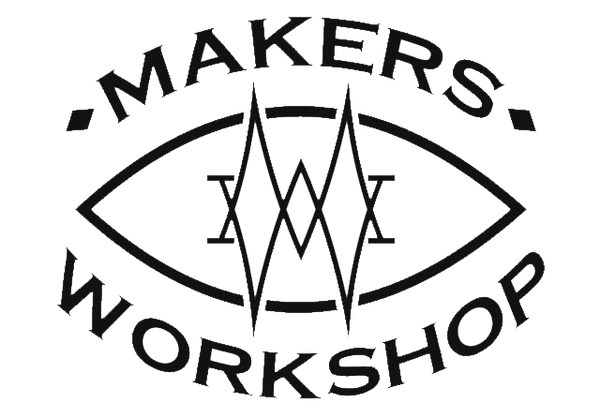First things first, I picked out my material. Any solid wood will work really well for this project. I went with a 5½” board of solid pine and cut it down to the size I wanted for my finished puzzle on our band saw.
Next, I got all the dimensions of my piece of wood using a digital caliper. Remember that the thickness of your board is particularly important when doing CNC router projects.
Then I used Easel Pro to create my design because it’s the program that goes with our Carvey. However, any program that you’re comfortable with that can communicate with your CNC router will do the trick.
The first step of creating the design was to enter in the dimensions of my piece of wood. Since I wanted the finished puzzle to resemble blocks, a bold block print felt like the right choice to use to then add in my niece’s name]. I am setting the text to be fully filled in.
I then got my CNC router prepared to take on the job. My design used a ⅛” drill bit, so I got that securely in place. Then I secured my board and went ahead with the carve.
After the carve, I had a little bit of shredding on the edges of my letters, but this came off very easily with a quick hand sand. I was in the mood to hand sand, so I went ahead and finished sanding the whole thing up to a 220 grit. Of course, you can use power tools here if you prefer to save time and effort.
Next, I applied the finish to the base piece. I went with Howard’s Butcher Block Conditioner. It’s a food-grade mixture of mineral oil and beeswax, and I really love the soft, durable finish it gives to wood. I used a generous coat on all sides and allowed it to soak in while I finished the rest of the puzzle.
Then I revisited my original name design and created a copy of it. I set this to carve directly on the outline of the identical design. The kerf of the drill bit will give the letter blocks the perfect amount of wiggle room to sit easily in the base piece. So in this case I have a ⅛” drill bit handling the cutting. This will make the letter blocks 1/16” smaller than the base piece letters on all sides allowing them to easily sit in place. Remember, you want to be sure to have tabs in your design when you’re cutting all the way through with pieces like this. That way, they don’t go flying on you in the machine. I always add my own tabs by creating a long, narrow rectangle set to a zero cut depth. This works every time!
And then I ran the cut.
Everything looked good after cutting the pieces, so I headed over to the scroll saw. This always makes quick work of removing the tabs I added.
I then used the disc sander to quickly remove the nubs left by the tabs and finished things off with a hand sand until I had the letters perfectly smooth.
To paint these I am using non toxic paints. Products marked as children’s finger paints are a great option for this step. I did one side of all the letters, and then allowed that to dry completely before flipping the pieces over and painting the other side of them.
The vision in my head had these blocks being really glossy when they were done, so I needed to put a glossy clear coat on top of them. But I wanted to err on the side of caution, so I went to my hardware store and grabbed a non-toxic, all-natural, toy-safe shellac finish. This gave a nice, safe glossy finish.
After I let these overnight to dry, I noticed a silly little error. I put the wet shellac to dry on the cardboard, so it had little cardboard wispies on the surface of the paint. For future reference, you really should always do this on wax paper. But there’s an easy way to handle this.
I lightly sanded the areas that needed it until the cardboard was removed. I also used this as an opportunity to sand any areas of the other letters that had dried kind of lumpy. I then touched everything up with more paint as needed.
Finally, I applied one last finishing coat of shellac. It’s very important to allow any finish you use here to dry thoroughly before it’s given to a child.
Going back to the base piece, I wiped off all the excess finish that had not soaked into the wood with a rag.
In my opinion, this is a really achievable CNC router project for any skill level. I absolutely loved the finished product, and think it would make a great gift for a birthday, a baby shower, or many other occasions!
